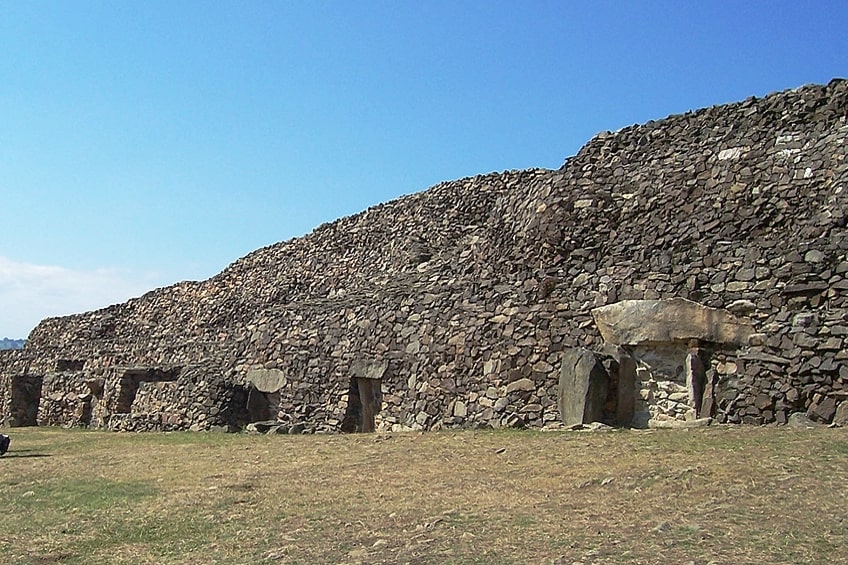Oldest Buildings in the World – Top 10 Timeless Treasures
The world is absolutely full of buildings and structures, but what is the oldest building in the world? Where is the oldest building in the world? In this article, we will have a look at the oldest buildings in the world, such as the oldest structure in the world, the oldest monument, and even the oldest wooden building in the world, although that one will be saved until the very end! So, keep reading to learn all about the oldest man-made structures on the planet.
Contents
- 1 A Look at the Oldest Buildings in the World
- 1.1 Göbekli Tepe (10,000 – 7500 BCE) in Anatolia
- 1.2 Tower of Jericho (8000 BCE) in the West Bank
- 1.3 Çatalhöyük (7500 – 5700 BCE) in Anatolia
- 1.4 Mehrgarh (7000 BCE) in Balochistan
- 1.5 Durankulak (5500 – 4100 BCE) in Durankulak
- 1.6 Solnitsata (5500 BCE) in Provadia
- 1.7 Barnenez (4800 BCE) in Brittany
- 1.8 Tumulus of Bougon (4800 BCE) in Bougon
- 1.9 Saint-Michel Tumulus (4500 BCE) in Brittany
- 1.10 Anu Ziggurat of Uruk (4000 – 3800 BCE) in Samawah
- 2 Frequently Asked Questions
A Look at the Oldest Buildings in the World
Below, we will discuss ten of the oldest buildings in the world, but it is worth first noting that practically all of them are from the Neolithic Period. So, it may be best to first have a look at what that period of human development was in the first place. The Neolithic Period is the final phase of the Stone Age, and it came right at the end of the last Ice Age. This period led to the development of agriculture, pastoralism, and permanent settlement.
This essentially means that we started to grow our food ourselves, own animals, and develop the earliest towns in existence.

Furthermore, these revolutions occurred throughout the world relatively independently of one another. The Neolithic Period would eventually give way to the earliest phase of the Bronze Age, in which humans first developed metallurgy. Now that that is out of the way, let’s have a look at the oldest buildings in the world. Many of these structures and sites are highly archaeological in nature and have required excavation. There may also be even older structures that we have yet to discover. Perhaps one day we will, but for now, these are the ten oldest buildings in the world.
Göbekli Tepe (10,000 – 7500 BCE) in Anatolia
| Date Constructed | 10,000 – 7500 BCE |
| Function | Place of worship |
| Location | Anatolia, Turkey |
Göbekli Tepe is the oldest structure in the world, or at least it’s the oldest known structure. There’s always the possibility that something new is discovered any day. However, until that day arrives, Göbekli Tepe is the oldest site we have discovered and it dates to 10,000 BCE. This ancient structure contains the oldest known megaliths in the world, and these megaliths are full of designs. The designs entail anthropomorphic depictions alongside the representations of wild animals and clothing. These kinds of images may show some of the earliest religious beliefs in the world, but it does become somewhat difficult to determine because we simply lack the information that would prove it as definitively as possible.
So, this means that we currently presume that this ancient site was a temple complex of some sort, but we cannot be too certain. In addition, only about 5% of it has been excavated as of yet.
Göbekli Tepe is from the Neolithic Period, and this means that there were few means to perform more complex styles of architecture. The houses that have been discovered are made of mud bricks and the monuments themselves are made of stone. However, there are no signs of agriculture in this area, but there is evidence of cereal processing. So, it may not have been an entirely permanent settlement, but we simply cannot know any of that for certain.

Tower of Jericho (8000 BCE) in the West Bank
| Date Constructed | 8000 BCE |
| Function | Tower |
| Location | West Bank, Palestine |
The Tower of Jericho is a location in the historical and biblical location that is Jericho. The tower is situated alongside the famous wall of Jericho that has mostly collapsed in the millennia since it once stood, this tower may be the oldest monument in the world. The reason it is believed to be a monument rather than a guard tower, as one may expect, is because there doesn’t appear to be much functionality as one. In addition, the tower lines up with the sunset on the summer solstice. This indicates that it is astronomical in nature rather than military. The Tower of Jericho itself is a relatively short building at only 8.5 m (or 28 ft), but seeing as it’s from the pre-pottery, early Neolithic Period, it’s a rather impressive overall design.
It was also only actually discovered during the excavations of the town in 1952-1958. This building, despite being one of the oldest buildings in the world, was lost for much of human history.
The tower also has an internal staircase that has 22 steps, its canonical in shape, and it was built using undressed stones. Thanks to its sheer ancientness, this relatively unsophisticated structure (by modern standards) would have taken a significantly long time to build, and archaeologists have suggested that it may have taken around 11,0000 working days. This structure is ancient, and we as a culture needed to start somewhere. So, while the world’s oldest monument may be relatively simple, it shows a vastly different period in which we toiled for thousands of days to produce a monument that held significance to us.
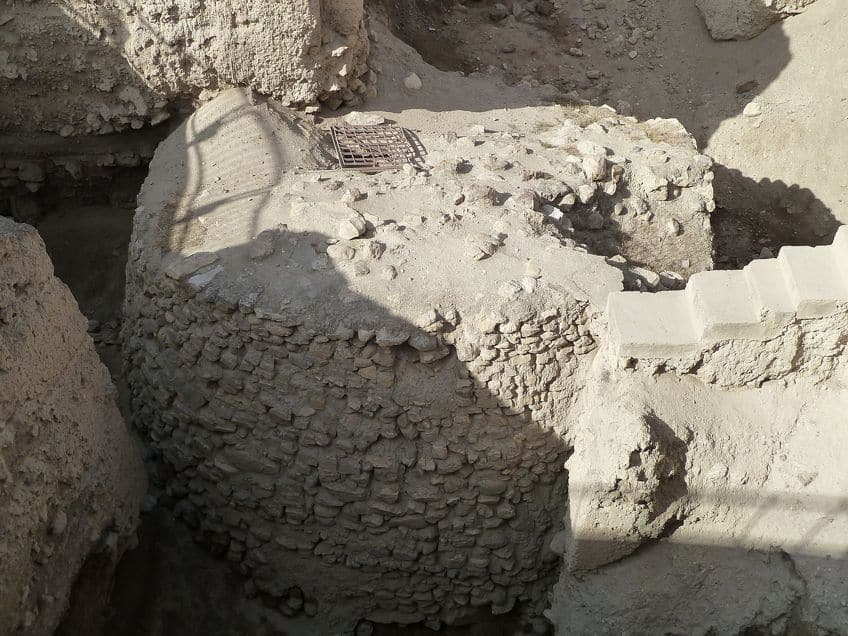
Çatalhöyük (7500 – 5700 BCE) in Anatolia
| Date Constructed | 7500 – 5700 BCE |
| Function | Settlement |
| Location | Anatolia, Turkey |
Çatalhöyük is a tell, which is an intentionally created mound that contains something of human design. This is one of the oldest structures in the world, and it is a collection of buildings that once served as a settlement. This particular settlement is from the Neolithic Period but is an example of a proto-city as many would have lived there in at least a sense of semi-permanence. The structure of these buildings is especially interesting as it’s a collection of residential structures that have no road structure. Instead, the buildings are all built right beside one another, and the entrances would have been on top.

This meant that the city was above the buildings in a sense. And it also wasn’t a small place as it may have housed about 10,000 people. The mound itself overlooks the Konya Plain and it rises 20 m (or 66 ft) above the ground to allow for a good overview of the region. However, it appeared to have been abandoned during the Bronze Age despite the relatively strong design of this proto-city. There may have been a river beside it centuries ago, so if that dried up there would have likely been little reason to stick around.
Mehrgarh (7000 BCE) in Balochistan
| Date Constructed | 7000 BCE |
| Function | Settlement |
| Location | Balochistan, Pakistan |
Mehrgarh is another pre-pottery, Neolithic archaeological site that was only discovered fairly recently. It was discovered in 1974, and it is located between three Pakistani cities, Sibi, Quetta, and Kalat. This ancient settlement contains six discovered mounds and a fishing village that may have been some of the earliest instances of both farming, with crops like barley, wheat, and dates being common, and also herding, with evidence of cattle, sheep, and goats being discovered there. The houses that were found are all of mud brick design, as is common for this time period, and the burial mounds have provided us with a stunning array of archaeological evidence for aspects of human existence like stone tools, beads, animal sacrifices, and basket design.
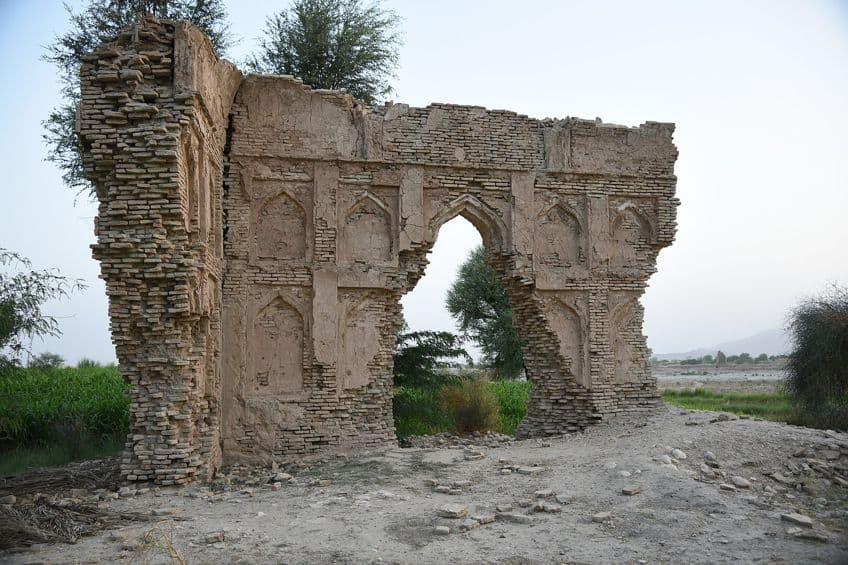
However, the most amazing discovery in this location was medicine, as many of the buried bodies contain evidence of early dentistry. This civilization had the ability to drill teeth. Alas, Mehrgarh became abandoned at some point. The theory is that it was abandoned in favor of a more fortified location that could better provide them with better defense. The fortified town of Nausharo is only five miles from this location, so it would be a good contender for where the residents of Mehrgarh disappeared so many millennia ago.
Durankulak (5500 – 4100 BCE) in Durankulak
| Date Constructed | 5500 – 4100 BCE |
| Function | Settlement |
| Location | Durankulak Lake, Bulgaria |
Durankulak is another archaeological site that provides us with some immensely interesting archaeological evidence for our early days as the modern human animal. Durankulak is located on an island, and it has shown evidence of small-scale cultivation of crops, pottery, and both herded and hunted animals. In addition, it contains more complex housing structures than had existed before.

The houses contained a repetitively designed interior in which the structure was maintained across several generations’ worth of reconstructions. These buildings also had separate rooms and more sophisticated floor designs. This is evidence of an early farming society, and it was only excavated in 1974-1997.
Solnitsata (5500 BCE) in Provadia
| Date Constructed | 5500 BCE |
| Function | Settlement |
| Location | Provadia, Bulgaria |
Solnitsata was an ancient town that may just be the oldest proper town with fortifications in Europe. It was discovered that this ancient town had a citadel and an inner and outer city. This made it far more like the kinds of cities that would later develop, and even though it may have only housed about 350 people, it is considered by many to fit the definition of a city. This town also contains some of the earliest instances of pottery and salt production. Salt was especially important for this city and early human civilization in general as it serves as a useful preservative. The salt production in Solnitsata was even more important because it formed the backbone of the city’s economy.
This small town may have supplied the entirety of the Balkans with the salt that it needed.
Solnitsata may have also been an immensely rich town for one so small as there have been the discoveries of many golden artifacts within its borders. So, the residents of this small town seemingly became wealthy because of their salt production, but alas, the town was ultimately destroyed in what is believed to be an earthquake. Interestingly, Solnitsata is located relatively near the ancient city of Anchialos, or modern-day Pomorie. This town possesses some of the oldest sea salt production facilities, so these two areas may have a shared history in salt production.
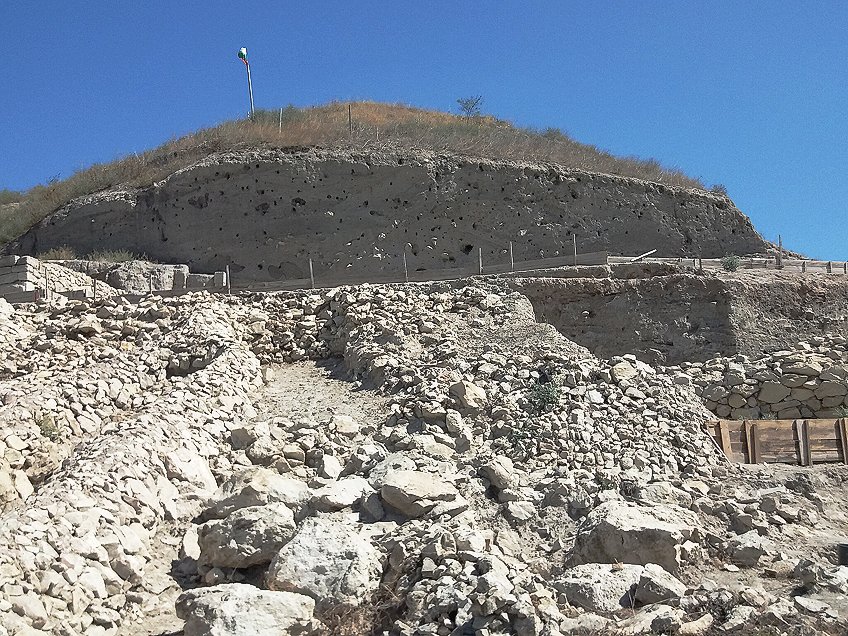
Barnenez (4800 BCE) in Brittany
| Date Constructed | 4800 BCE |
| Function | Passage tomb |
| Location | Brittany, France |
Barnenez is an ancient cairn from the early Neolithic period. It is located in France and contains some of the oldest megalithic structures in the world, but it also contains some of the oldest megalithic art. These are some of the oldest buildings in the world, and this cairn has housed many artifacts of archaeological interest. The cairn at Barnenez contains eleven chambers that are full of engraved symbols that depict disparate iconographies, like bows and axes, a snakelike creature, and a constantly repeated U-shaped design. These carved images are quite similar to some artworks that have been found on megaliths in different locations. This indicates a shared history.
The entire structure is also quite large at 72 m long, 25 m wide, and 8 m tall, and it was constructed using 13-14 tons of stone. Furthermore, the cairn’s façade makes use of a stepped design that is typical of cairns of this variety.
However, the entire site could have been destroyed in recent decades. The property was actually privately owned for a long time, and it was used as a quarry to harvest paving stones. It was almost entirely destroyed, but the discovery of those chambers led the community to take control of the site. Thankfully, this piece of human history wasn’t destroyed.
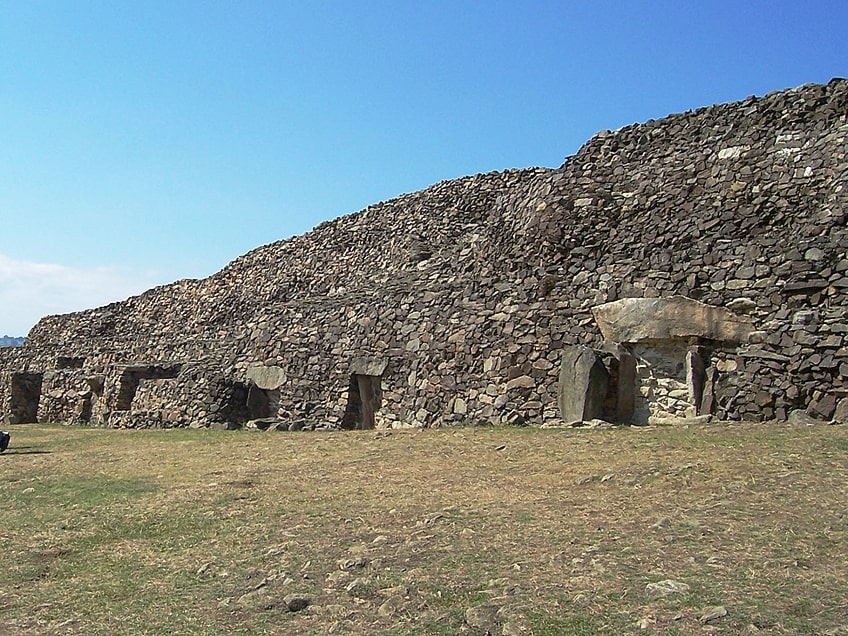
Tumulus of Bougon (4800 BCE) in Bougon
| Date Constructed | 4800 BCE |
| Function | Burial mound |
| Location | Bougon, France |
The Tumulus of Bougon is, as the name suggests, a tumulus. This is a type of barrow or burial mound. In this case, it is a collection of Neolithic barrows that were only discovered in 1840, and it has been under protection since 1873 to prevent any kind of destruction of this ancient site. The largest of the barrows is a stepped mound that was made using a dry-stone technique, and it was finished off with a capstone that weighs 90 tons. The interior of the structure is supported by two monolithic pillars. These pillars also serve to subdivide the chamber and allow for a more room-style design.
This barrow was discovered with over 200 skeletal remains inside, and there was also interesting medical evidence discovered on one particular skull.
The person the skull belonged to had received three trepanations in their life, and this is the medical act of drilling a hole into someone’s head to relieve pressure. This particular person must have survived the procedure if they were able to keep living with more than one of these ancient surgeries. Other discoveries included many pieces of pottery and other artifacts. However, the area appears to have been abandoned shortly after construction and then reused later. Some of the other barrows had been cleared out before they were excavated; this is because of their reuse.
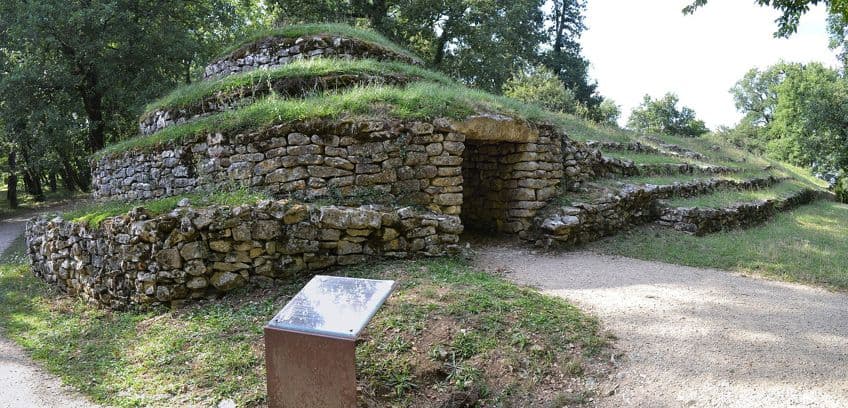
Saint-Michel Tumulus (4500 BCE) in Brittany
| Date Constructed | 4500 BCE |
| Function | Burial mound |
| Location | Brittany, France |
The Saint-Michel tumulus is another megalithic burial mound. It is also the largest burial mound in continental Europe, and so it is of special interest because of its sheer size. This mound is 125 m (or 410 ft) long, 50 m (or 160 ft) wide, and 10 m (or 33 ft) tall. It resembles a giant hill, but unlike a hill, it was full of a variety of interesting artifacts, like axes, flint tools, and pearls.
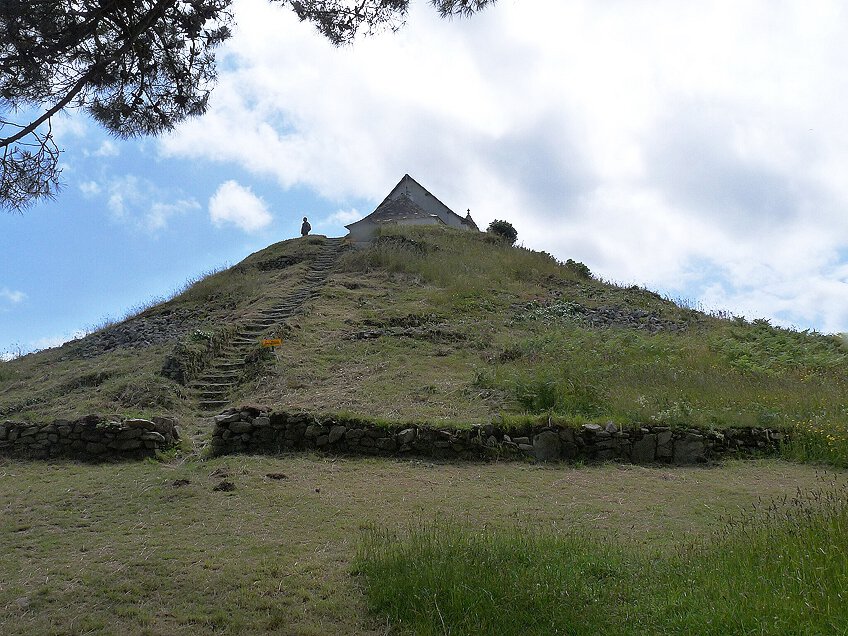
The mound is also not alone as there was a similar, but smaller mound discovered nearby. However, that second mound contained far fewer items of archaeological interest. One of the other interesting things about this location is that while this burial mound may not have provided as much interest as some other sites, it clearly did produce a pleasant hill structure because there’s now a chapel on top of it that has a lovely view of the surrounding area.
Anu Ziggurat of Uruk (4000 – 3800 BCE) in Samawah
| Date Constructed | 4000 – 3800 BCE |
| Function | Ziggurat |
| Location | Samawah, Iraq |
The Anu Ziggurat of Uruk is an ancient Sumerian site, and it was also surrounded by one of the oldest cities in the world. The ziggurat itself is one of the oldest buildings in the world, and it also served as an important temple structure for the growing Uruk civilization that developed around it. The Uruk Period was a revolutionary period of urbanization and state formation, and places like Uruk would become integral urban centers. This city was also the place that was supposedly ruled by the legendary king Gilgamesh. Furthermore, it has been identified as the Biblical city of Erech from Genesis. However, the city would eventually lose its overall importance and would fall into the hands of the Babylonians.
The ziggurat within the city was actually the oldest thing in the city, and it was dedicated to the Sumerian sun god Anu.
It is a massive mound that was topped with a cella, but it was also a site of consistent construction as there were 14 phases of construction over the centuries before it was abandoned. The ziggurat also contained the White Temple, which was built on top of it, and the Stone Temple, which was built on the northwest edge of it. This ancient ziggurat also contained a grand limestone staircase that was used for religious processions, and there was even a drainage trough that runs along the side of it to ensure that there was no flooding of the ziggurat. This is a grand and ancient structure, and one of the oldest buildings in the world in one of the most important early cities in the world. A fitting final building to explore in this article.

Thus concludes our examination of the oldest buildings in the world. Many of the world’s oldest man-made structures cannot be labeled as buildings in the modern sense of the word, but they do provide us with a far deeper understanding of our origins as the human animal that we are today.
Frequently Asked Questions
What Is the Oldest Building in the World?
Göbekli Tepe is the oldest structure in the world, and it is little more than a ruin in the modern day. This archaeological site contains the oldest known megalithic structures that have ever been discovered, and it is also so old that we do not know the exact purpose of this structure. We know that it is the oldest man-made structure that we have discovered and that it also contains the oldest monuments, but still don’t know whether it is a temple or not. However, we are quite certain that it was built as a temple complex.
What Is the Neolithic Period?
The Neolithic Period was the last phase of the Stone Age. Once we, as human beings, hit this stage in our development, we started to do some of the things that would strongly distinguish us from all other animals. We started agriculture, pastoralism, and the beginnings of non-nomadic settlement. To simplify: we farmed, we kept non-human animals, and we stopped moving around and instead developed the first permanent human homes.
What Is the Oldest Wooden Building in the World?
The oldest wooden building in the world is a temple in Japan called Hōryū-ji Gakumonji. This ancient wooden structure was completed by 607 CE, and it has remained standing to this day. There were definitely structures made of wood before this, but wood tends to be less resistant to the elements than earthen substances like stone, so most wooden structures have fallen apart. This 1400-year-old building has managed to withstand all these centuries without toppling over.
Justin van Huyssteen is a writer, academic, and educator from Cape Town, South Africa. He holds a master’s degree in Theory of Literature. His primary focus in this field is the analysis of artistic objects through a number of theoretical lenses. His predominant theoretical areas of interest include narratology and critical theory in general, with a particular focus on animal studies. Other than academia, he is a novelist, game reviewer, and freelance writer. Justin’s preferred architectural movements include the more modern and postmodern types of architecture, such as Bauhaus, Art Nouveau, Art Deco, Brutalist, and Futurist varieties like sustainable architecture. Justin is working for artfilemagazine as an author and content writer since 2022. He is responsible for all blog posts about architecture.
Learn more about Justin van Huyssteen and about us.
Cite this Article
Justin, van Huyssteen, “Oldest Buildings in the World – Top 10 Timeless Treasures.” artfilemagazine – Your Online Art Source. February 14, 2024. URL: https://artfilemagazine.com/oldest-buildings-in-the-world/
van Huyssteen, J. (2024, 14 February). Oldest Buildings in the World – Top 10 Timeless Treasures. artfilemagazine – Your Online Art Source. https://artfilemagazine.com/oldest-buildings-in-the-world/
van Huyssteen, Justin. “Oldest Buildings in the World – Top 10 Timeless Treasures.” artfilemagazine – Your Online Art Source, February 14, 2024. https://artfilemagazine.com/oldest-buildings-in-the-world/.


